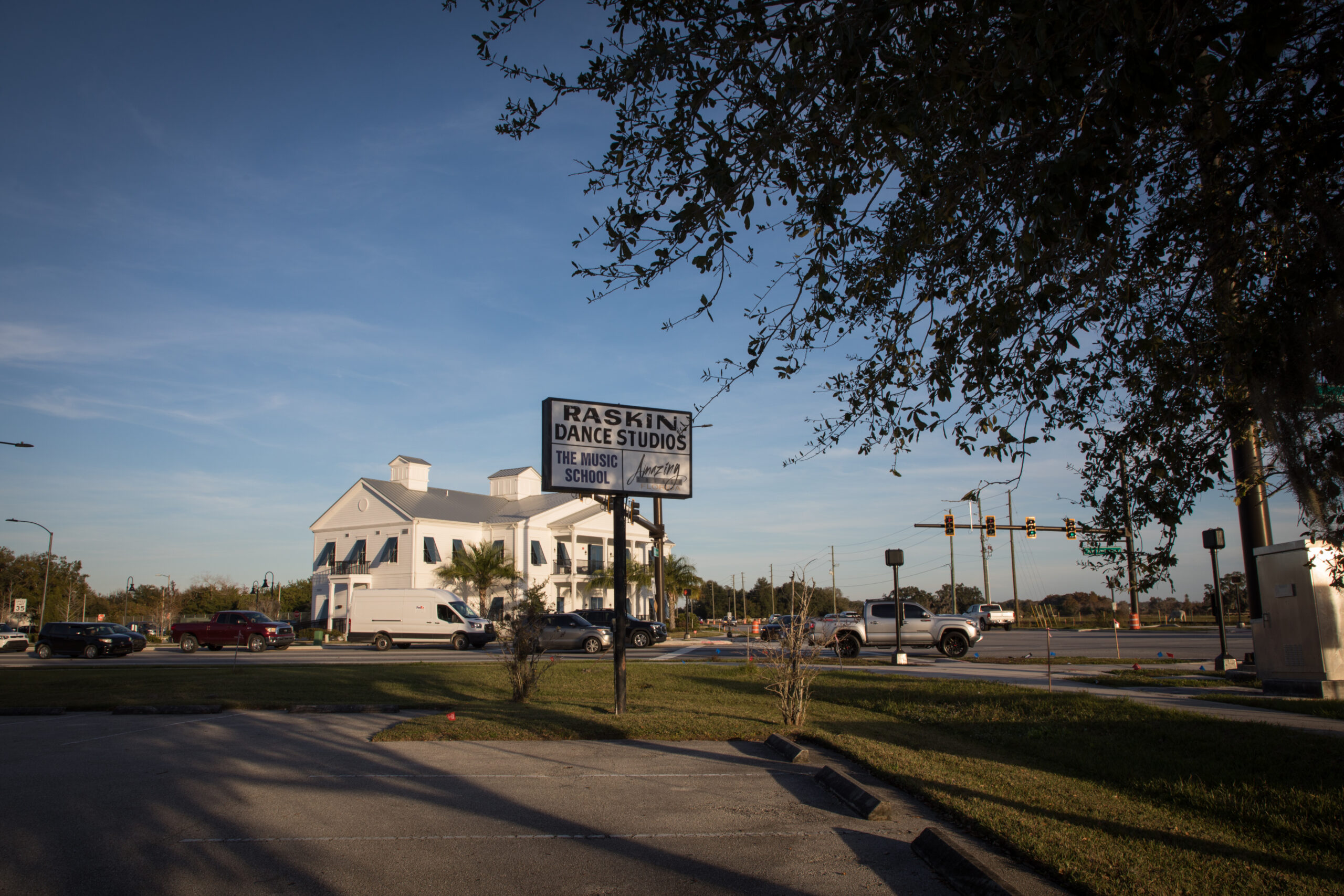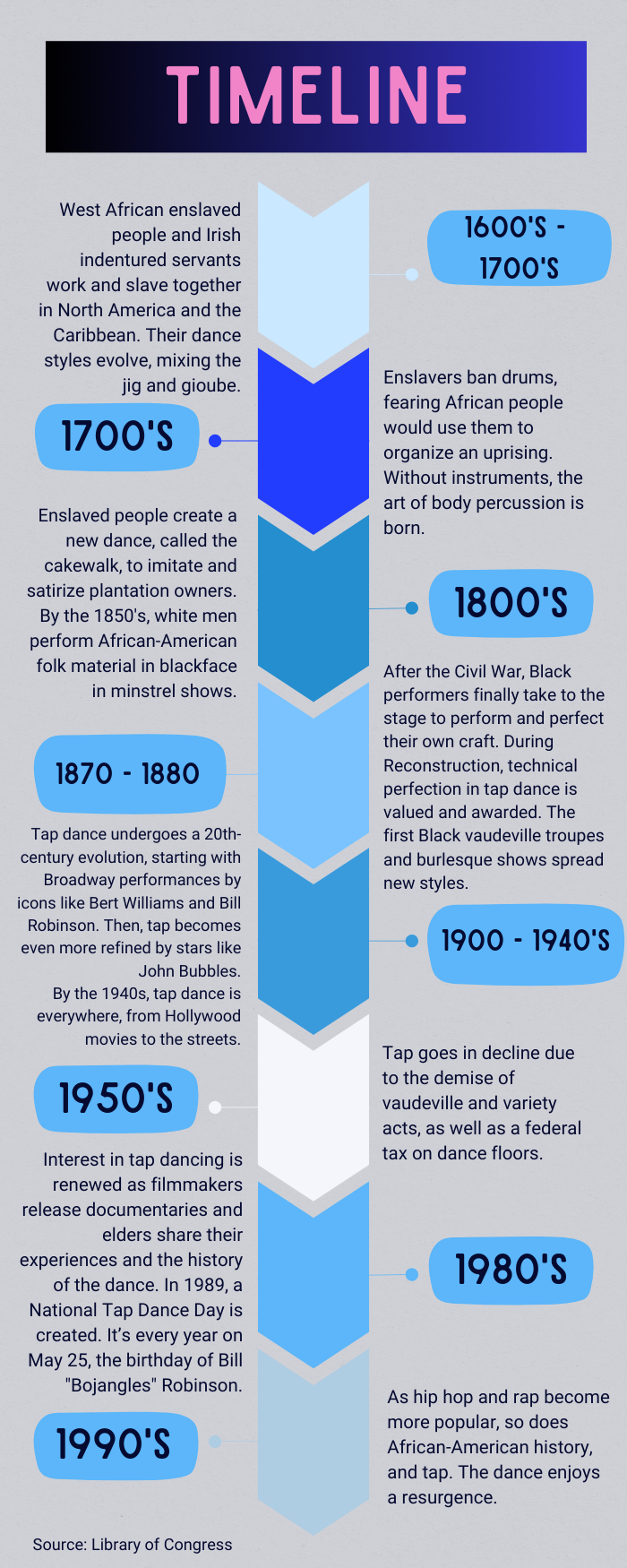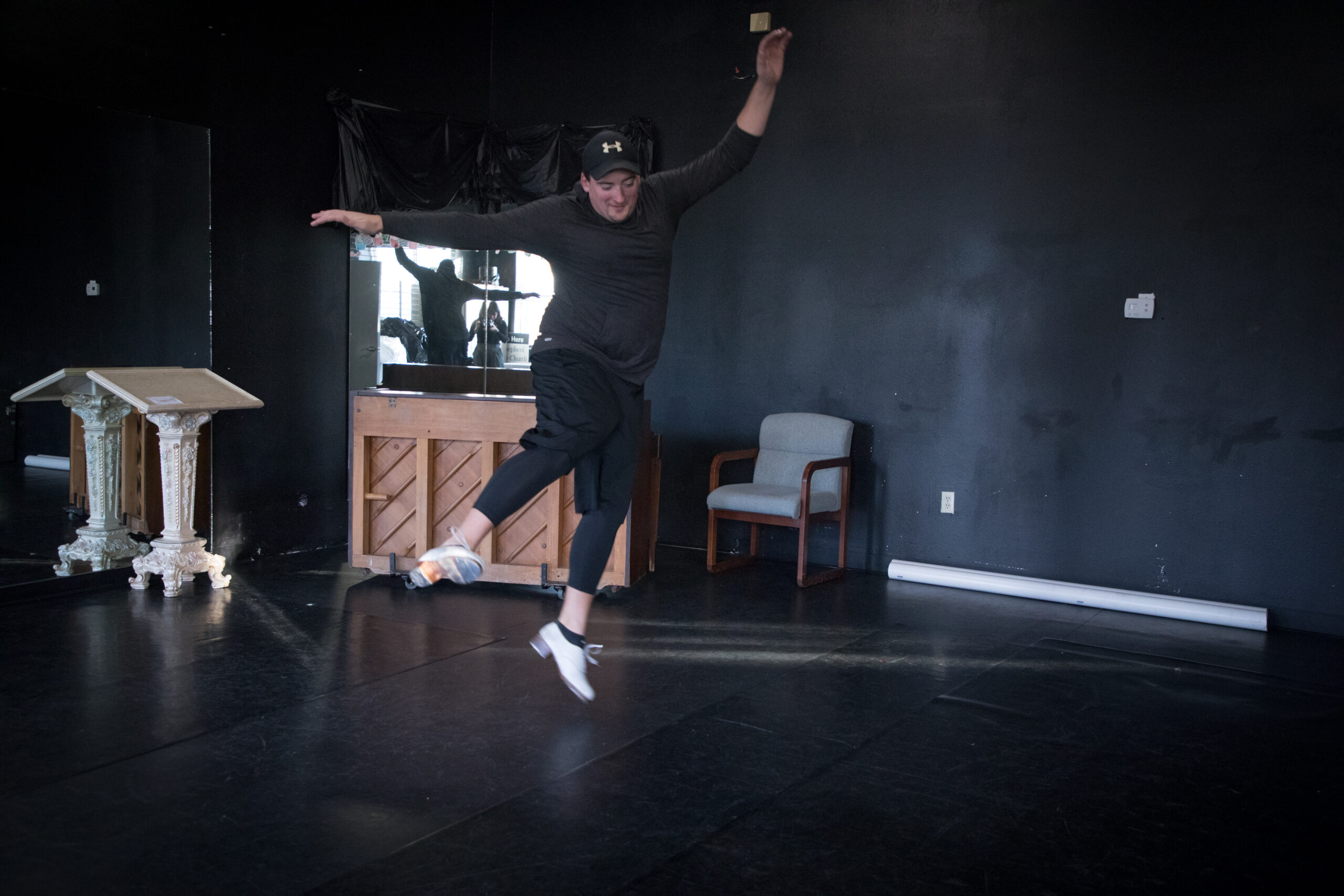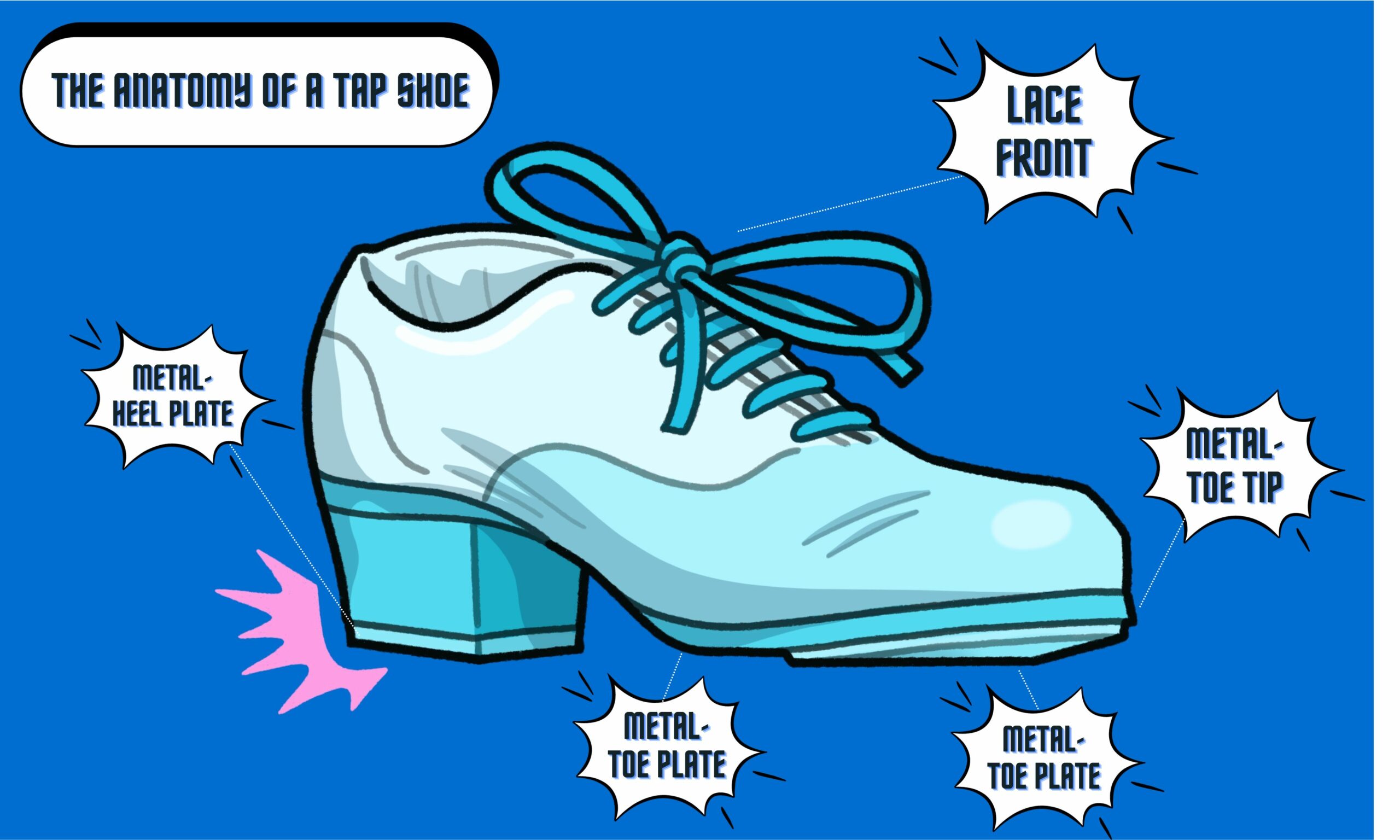
LAUREN IBAÑEZ/ NEXTGENRADIO
What is the meaning of
home?
Kayla Kissel speaks with Josh Nixon about his passion for the art of tap dance and how he tries to keep the artform alive and preserve its African roots and history.
How one dance instructor is preserving the meaning and history of tap
Listen to the Story
Click here for audio transcript
“ 1, 2, a 3, and a 1,2,3,4…” Tap, 3-5 secs, tapers off low but remains
I believe that there’s a rhythm to life from the moment of creation, inception, the first thing we hear or feel is our mother’s heartbeat and that’s a very consistent rhythm. We’re born with rhythm. Your job is to find where your rhythm sits.
My name is Josh Nixon, and I am a tap dancer, choreographer, performer, and instructor.
Sounds of tap dancing – remains in background
My home for me has always been where my tap shoes are because that’s what’s consistently gotten me through life. And it’s all about creating rhythm, creating music.
When I was three years old, my mom took me to see a production of Singing in the Rain. All I wanted to do was get up and dance with everyone And when I was four, I took my first dance class, never really stopped.
I’ll tap down grocery store aisles sometimes, I’ll tap in my house, I’ll tap just to get an idea out or I’ll tap to get stress out.
Sounds of tap dancing picks back up
It’s a love hate relationship and the beautiful thing is that tap dance is always there. So if you’re mad at the dance, you can walk away from your shoes for a little bit and come back knowing that it’s still going to be there where you left it.
“Get these out”, Zipper zipping, “From there, just put them on”
sound of shoes slipping on
I teach tap from three different points of view, the technique, the musicality and the history. And I always make sure to move forward as an artist and as a person trying to carry on the traditions of the culture of tap dance if you don’t know the history. So drums, instruments. the whole polyrhythm idea of doing two things at once that came from African roots.
“5,6,7,8” sound of tap dancing
When the triangle trade was happening in the 16 and 1700s, people from Europe would come down to Africa, but they didn’t just take the people, they took the culture.
When the enslaved were on plantations and trying to just keep their culture and roots alive they turned to music and drums, instruments.The plantation owners would think that they were trying to start an uprising, so they took them away. And then all they had left was their bodies and their dancing. That’s where body percussion comes from.
Sound of tap dancing
Tap dance came from a place of oppression. It came from a place of need.
I think one of the best ways that I can do that is continuing to inform any student that I teach about the Black roots and about all the masters who came before.
Knowing also that this is a Black-rooted art form, and I am a very white person trying to honor this and pay homage to that. And I think through my life I’ve been able to realize that, you know, friends sometimes will come and go, situations will sometimes come and go, jobs will sometimes come and go. And it’s more my way of being able to get through that through tap dance. That has really made me feel that sense of home and security.
Sound of tap dancing
To Josh Nixon, everything in life has a rhythm, from the traffic on the street to a local barista steaming milk.
Nixon, who is 26 and lives in Davenport, said that he wakes up every morning following his own beat. It’s his philosophy.
“Rhythm is the language of life,” Nixon said. “I think, honestly, we could be at a much more peaceful place in our world if everybody just got a little rhythm in their life.”
It was his love for dance, rhythm and music that led Nixon to what he considers to be his one true home. It’s not a house or even a town. It’s his well-loved pair of metal-plated tap dance shoes.
“It’s a love-hate relationship, and the beautiful thing is that tap dance is always there,” he said. “So, if you’re mad at the dance, you can walk away from your shoes for a little bit and come back, knowing that it’s still going to be there where you left it.”

Josh Nixon poses in front of the Raskin Dance Studio in Kissimmee, Fla., on Tuesday, Jan. 2, 2024. Nixon said that he has turned to teaching tap as a way to share the artform, following his philosophy of rhythm and shedding light on tap’s history.
KAYLA KISSEL / NEXTGENRADIO
When he was 3, Nixon watched a production of Singing in the Rain, and soon after, his parents enrolled him in lessons.
“All I wanted to do was get up and dance with everyone,” he said. “We were sitting on the edge of an aisle as the actors would come down, I would try and climb up onto the platforms.”
He was very determined but faced criticism along the way. In high school, Nixon came face-to-face with a teacher who did not believe in his dream of tapping professionally.
“He looked right at me, and he said, ‘You’ll never make it. You won’t do it. The world doesn’t need dancers … Performers are a luxury,’” Nixon said. “I used that kind of as, like, the first real fire or ignition for me to push and do what I needed to do to accomplish my dream.”

Josh Nixon holds his shiny, black tap shoes, what he calls his instrument for rhythm. Years of teaching have left them with scuff marks. The studio’s wooden plank floor allows him to stand up on his toes and add different sounds to the art.
KAYLA KISSEL / NEXTGENRADIO

Raskin Dance Studio’s sign stands tall in the golden glow of sunny Central Florida on Tuesday, Jan. 2, 2024. Established in 1989, the studio is now home to dancers of all ages and holds some of Josh Nixon’s classes.
KAYLA KISSEL / NEXTGENRADIO
Fresh out of high school, Nixon started teaching dance with a mission to keep the art and the history of tap alive, and pass on his knowledge to the next generation of dancers. As a white male, he said that he strives to honor various influences of tap, including roots in both Irish and African cultures.
“I think it’s hard to move forward as an artist and as a person who’s trying to carry on the traditions of the culture of tap dance if you don’t know the history,” Nixon said. “One of the best ways that I can do that is continuing to inform any student that I teach about the Black roots.”
Nixon taught his first master class at age 18 in Washington D.C., and after moving to Florida, he held another master class at Raskin Dance Studio.
Since then, Nixon said that he’s worked professionally around the world. He’s performed in Europe, on several cruise ships, and with Chloe Arnold, an Emmy-nominated dancer and founder of the Syncopated Ladies in Los Angeles.
“People who say that tap is a dying art, they have just been looking in the wrong places,” he said.
He’s contributed to tap’s revival. In 2023, he organized and launched the first-ever Central Florida Tap Festival hosted at Raskin Dance Studio, which dozens of people attended.
What Nixon focuses on now is his approach as a teacher. In the last eight years, he’s taught at over 10 dance studios.
Kevin Marmol, a 24-year-old dance teacher based in Virginia, said that Nixon was his inspiration.
“As Josh’s student, I observed him for many years and his determination and perseverance has motivated me to be the best tap dancer I can be,” Marmol said. “Because of him I became a tap teacher myself.”
Nixon said that besides the technicality and musicality of the dance, he also teaches the history.
During the Triangle Trade from the 1500s to the 1700s, Europeans took African people from their homelands and brought them to colonies for labor.


In this undated photo, a young Josh Nixon performs on stage at the StarQuest International dance competition.
COURTESY OF JOSH NIXON

Josh Nixon is air bound after brushing his feet off the floor to hit a heel click at Raskin Dance Studio. Nixon began his journey as an instructor right out of high school and taught his first master class at the age of 18.
KAYLA KISSEL / NEXTGENRADIO
It’s a love-hate relationship, and the beautiful thing is that tap dance is always there.
The enslaved preserved their cultural identity from home, often through the musicality of song or through percussion-based instruments. In fear that the enslaved were trying to organize, plantation owners banned drums. This is how body percussion was born.
“Tap dance came from a place of oppression. It came from a place of need. It came from a place of needing to keep culture alive,” Nixon said.
He said that he knows he is only able to tap because of the people who came before him. It allows him to continue tapping to the rhythm of life.
“I think that when people start to find their own rhythm and what that means in their own lives, respectively, they can get guided towards home and whatever aspect that means for them.”

LAUREN IBAÑEZ/ NEXTGENRADIO
